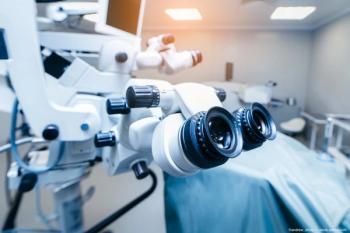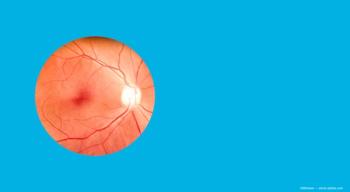
Develop the future of your practice
An ophthalmologist can give a great eye exam, but to be successful in a family practice the eye-care professional (ECP) must make sure the child-patient feels cheerful, healthy, and participative. The environment should welcome young patients. Their positive attitudes will reflect on a staff.
Key Points
An ophthalmologist can give a great eye exam, but to be successful in a family practice the eye-care professional (ECP) must make sure the child-patient feels cheerful, healthy, and participative.
Personalizing healthy sight
The concept of "healthy eyes" should be the core of your examination and patient care strategy. During your encounters with young patients and their parents, healthy sight interview techniques, in conjunction with prescription analysis skills, can enhance the exam. Many eye exams result in only a child's need for a small refractive correction or minor medical help. Those matters should be presented with a positive and optimistic approach by making the encounter fun as well as interactive.
A small reward at the end of the exam will make a child's day and a return visit will be a pleasant and enjoyable experience.
When it comes to discussing corrective lenses and the need for eyewear, incorporate these benefits:
Remind parents that they almost certainly insist on their children using other safety equipment-such as wearing a life jacket when splashing around in a pool, or using a helmet and shin guards when riding a bike-so buying impact-resistant lenses provides safety equipment for their children's vision.
Use statistics to support your statement:
Children should be fitted 4 mm higher than adults. Measure height to the center of the child's pupil and add 4 mm to achieve the desired reading. When finished lenses are adjusted on the patient at delivery, the optical center of the lens-rather than the fitting cross-will line up with the pupil center.
Recommending from the chair builds both your family ophthalmologic practice and your optical dispensary. No advertising can compare with the effectiveness of a recommendation from the ophthalmologist to their patient-no matter what the patient's age.
Edward C. August, MBA, ABOM, NCLC, is a professor at New York City College of Technology, University of New York. He is also clinical coordinator of the Department of Vision Care Technology. August is compensated by Safilo USA Inc. as well as PPG Industries, Monomer Division, on behalf of Trivex.
Donna M. August, AAS, ABO, is a New York state licensed optician. August is president of August Enterprises, which specializes in ophthalmic practice development as well as consulting for frame and lens manufacturers. She works with optical schools nationwide and serves on the advisory board of Essex County College, Newark, NJ.
Readers may contact the Augusts at
.
Newsletter
Don’t miss out—get Ophthalmology Times updates on the latest clinical advancements and expert interviews, straight to your inbox.


















































.png)


